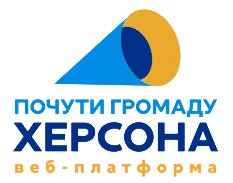Research objective: to find out the attitude of Kherson residents toward current demographic and migration challenges.
Sample size: 402 respondents.
Field stage period: September 1 – 10, 2024.
Research client: Community Foundation of Kherson “Zakhyst”.
Key Findings
1.Almost two-thirds of respondents (63%) believe that after the expiration of temporary refugee protection status (if the war ends by then) EU member states should create conditions for Ukrainian refugees to return to Ukraine. The second most popular option was ensuring conditions for migrants to obtain permanent residency (18%), and the third one – refugee status (9%). Kherson residents outside of the city choose the option of permanent residency (22% versus 16%) more often, while refugee status (5% versus 11%) is less popular.
2. If the war lasts, 36% of respondents believe that EU member states should create conditions for Ukrainians to obtain refugee status, while 34% would like the EU to grant them permanent residency. 21% claim that even given such a situation, the EU should also facilitate the return of Ukrainian citizens back to their country. Kherson residents outside of the city chose the option of granting refugee status more often than Kherson residents who have remained in the community (42% vs 33%).
3. The next question was about the ways to solve Ukraine’s demographic issue. 77% of respondents believe that the best option is to make as many Ukrainians as possible return home by implementing positive (political) incentives. The next was the option of returning Ukrainians by any means, even by coercion (7%). Only 6% claimed that the best option would be to attract labor migrants from other countries around the world, and 4% chose the option of increasing the birth rate.

4. A similar trend in preference of the former population is also true for Kherson. That said, the respondents do not significantly differentiate between those who fled to other regions of Ukraine or abroad: 72% fully or rather agree with the option to make the first category return, and 69% – the second. A bit less general share of respondents were positive about internal migration, that is, people coming from other regions of Ukraine to Kherson (61% fully or rather support), and migration of people from rural parts of Kherson Oblast to the city (55%). Less than half (42%) responded favorably to the statement that it is pointless to return the former population, and only 17% agree that attracting migrants from other countries is necessary.
5. According to the respondents, the best political measures to restore the Kherson population are promoting entrepreneurial development (66%), reconstructing damaged buildings (60%), and improving conditions for young families with children (54%), given a peaceful future.
6. As for the scenario where most Ukrainians do not return from the EU and labor migrants are needed, approximately half (51%) believe that the latter’s stay in Ukraine should be limited to the duration of their employment agreement (2-3 years). 31% of respondents answered that the state should create conditions for them to obtain permanent residency.
7. The last question was about the countries and regions of origin of labor migrants to be attracted to Kherson, and about them living in the same communities as the respondents. Europe was the most popular origin – 46% of respondents see its residents as labor migrants, and 62% as neighbors. The second most popular were those from Transcaucasia (19% and 21%, respectively). The third most popular country of origin was Belarus (14% and 17%), and the fourth were countries of central Asia (8% and 8%). As to citizens of the Russian Federation, 8% would agree to see them as labor migrants and only 2% would agree to live with them as neighbors.
You can read the full report by downloading it or read it in Ukrainian.
This research was conducted by the Zakhyst Kherson Community Foundation Charitable Organization as a part of its project implemented under the USAID/ENGAGE activity, which is funded by the United States Agency for International Development (USAID) and implemented by Pact. The consents of this research are the sole responsibility of Pact and its implementing partners and do not necessary reflect the views of USAID or the United States Government/
Reproducing and using any part of this product in any format, including graphic and electronic, copying or any other usage is suitable to reference to the sourc/




